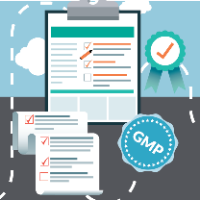Accelerating your AAV pathway to GMP & clinic
Cell & Gene Therapy Insights 2022; 8(9), 1187–1199
DOI: 10.18609/cgti.2022.236
Adeno-associated virus (AAV) is one of the most commonly used viral vectors in gene therapy. It is typically manufactured by combining three separate plasmid DNA constructs with a mammalian cell line in a process known as triple transfection of HEK293 cells. Although this method is widely employed and has an extensive clinical track record, there remains some challenges in getting an AAV product to the clinic. These challenges include long development timelines, difficulty in securing critical raw materials such as plasmid DNA, and bottlenecks with quality control testing and product release. To overcome these challenges, Charles River has established the nAAVigation™ platform process for AAV production that has the capability to cut a viral vector gene therapy program’s timeline from development to GMP clinical production by 55% versus traditional process development. This article provides an overview of AAV production challenges and how they can be overcome by leveraging an integrated platform approach bringing together plasmid production, vector production, analytical testing, and a secure supply chain.
